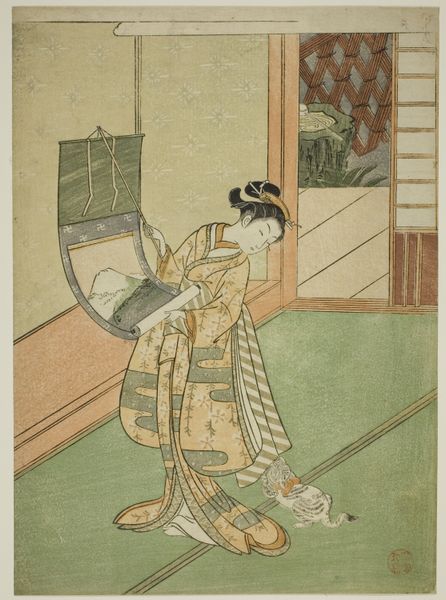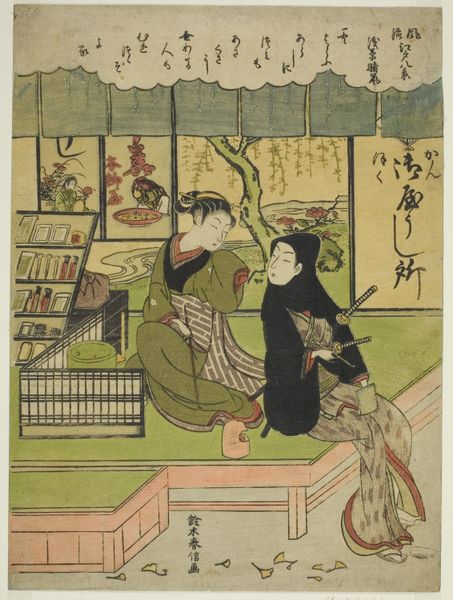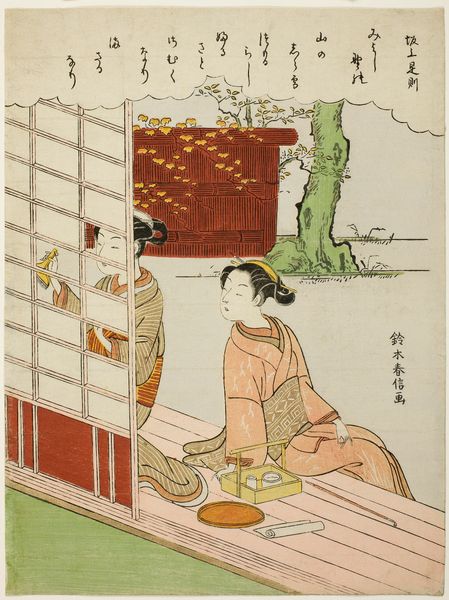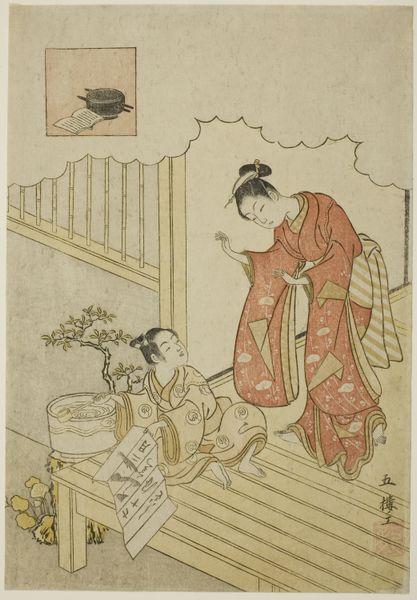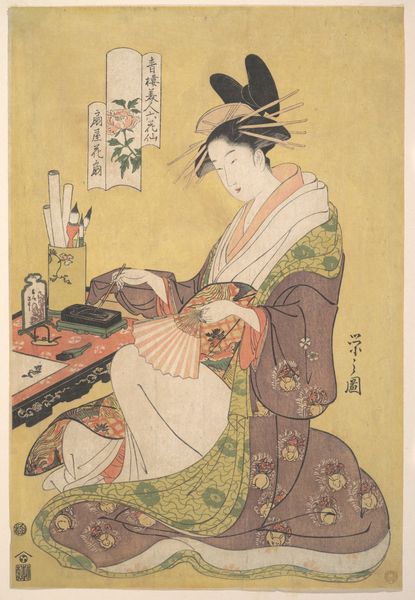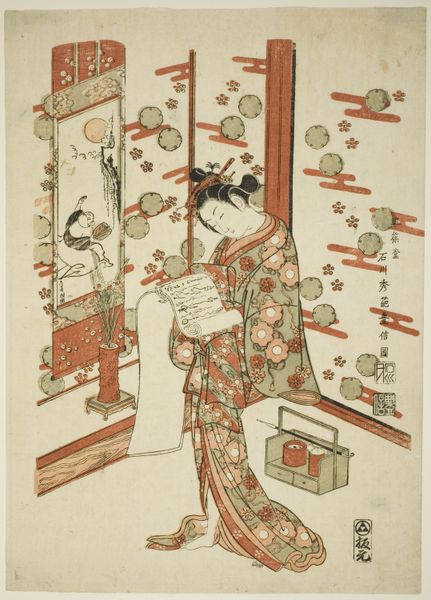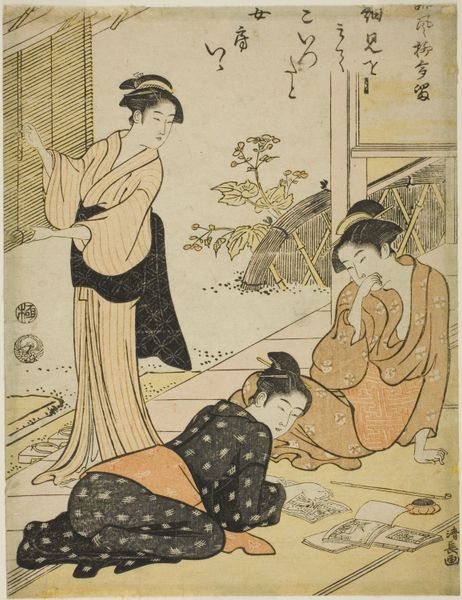
Knowledge (Chi), from the series "Five Cardinal Virtues" 1767
0:00
0:00
tempera, print
#
portrait
#
tempera
# print
#
asian-art
#
ukiyo-e
#
genre-painting
Dimensions: 28.5 × w. 20.9 cm (11 1/8 × 8 1/8 in.)
Copyright: Public Domain
Curator: Before us is Suzuki Harunobu's 1767 tempera and print piece, "Knowledge (Chi), from the series 'Five Cardinal Virtues'," currently held at the Art Institute of Chicago. What impressions strike you initially? Editor: Well, there's an undeniable air of domestic tranquility. A quiet tableau, almost dreamlike in its softness. The women’s poses have this choreographed elegance. But what stands out is how the whole scene hinges on the meticulous strokes, the deliberate artistry of calligraphy. Curator: Indeed. The composition cleverly uses the receding planes of the room, and the subtle interplay of line and form creates a visual harmony. Look at the meticulous arrangement of shapes, where a geometric background gives order and clarity to an indoor intimate scene. The very structure invites us to reflect on form and function in art and society. Editor: It also beckons us to consider this artistic production of women that might resonate across cultures and time, of women involved with practices typically denied to them at the time: it embodies knowledge through images of studious concentration and the quiet power of artistic learning. It becomes a symbol for an intellectual empowerment and virtue. Curator: Intriguing. Furthermore, if we see this Ukiyo-e in series, understanding that the ‘Five Cardinal Virtues’ all possess particular meaning as images of an orderly Confucian society. “Knowledge” here could underscore the cultivation of learning as a key virtue and discipline within that societal structure, while promoting education as vital to social equilibrium. Editor: But let’s look beyond simple social virtue! Harunobu captures, perhaps inadvertently, the evolving roles of women. In contrast to being passive objects in other images, here, we witness female intellect celebrated directly; and this also symbolizes a shift to active engagement. This represents, after all, much more than pure intellectual capability or obedience. Curator: Absolutely, but it’s important to remember that in aesthetic terms, we see how form can be manipulated by an artist. The subtle gradations in colour and the calligraphic qualities evident throughout all make this work such an expressive masterpiece; regardless of whatever interpretations might exist from varying sociopolitical standpoints Editor: In summary, viewing this beautiful image reveals insights into both an artistic expression and reflections on cultural symbols of its day. Its enduring fascination rests upon more than pure visual artistry. It stirs debates relevant to contemporary sensibilities as well.
Comments
No comments
Be the first to comment and join the conversation on the ultimate creative platform.

